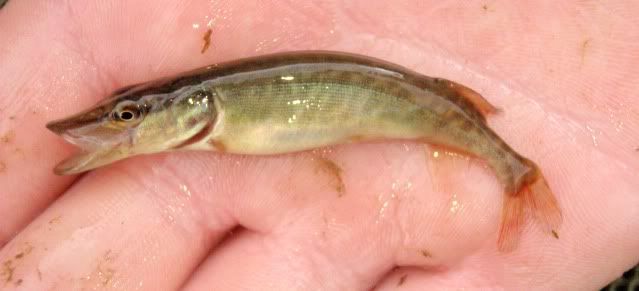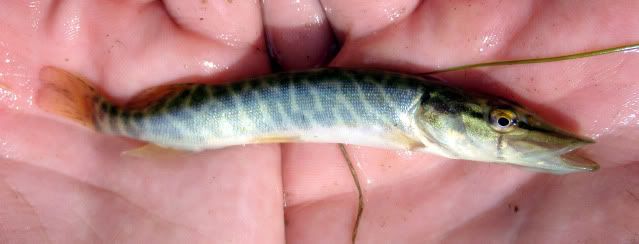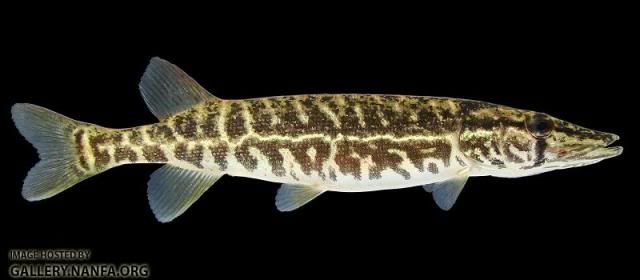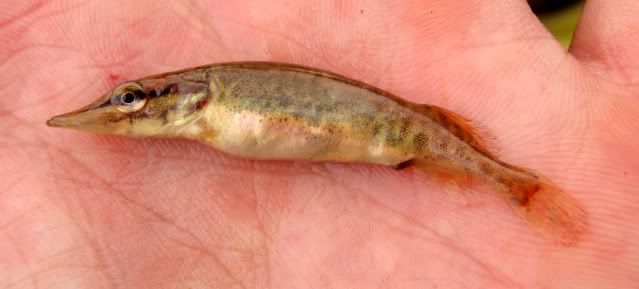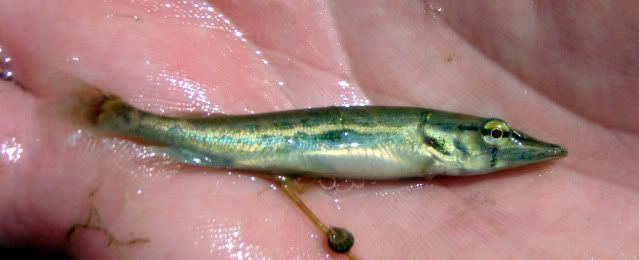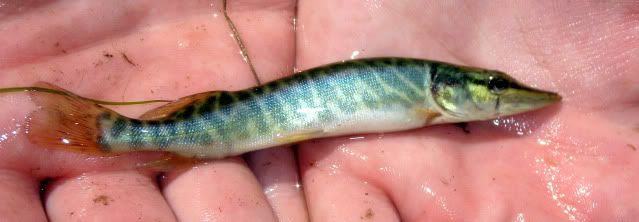As part of my research, I have to be able to distinguish the difference between juvenile northern pike (Esox lucius) and juvenile grass pickerel (Esox americanus vermiculatus). I figured I could pass along the knowledge I've gained through the years, as to help others readily tell the difference between the two species. As juveniles, these two species can be difficult to separate. But a few key characteristics can quite diagnostic. I'll outline those below. A paper published by Kleinert and Mraz in 1966 did a fantastic job of illustrating the morphological differences between the two species starting from young fry (12 mm long) all the way up to advanced fingerlings (75 mm long). That paper can be found online here. On pages 23-26 of their paper, they discuss the differences (with fantastic photos) between the two species. Please, use this as a guide.
I'll add some additional information from personal photos below.
For me, the simplest way to tell the two species apart, when they're both juvenile, is to look for the presence or absence of a "pigment-free line" below the lateral line. Let me demonstrate what I mean by that. Below is a picture of a juvenile Grass Pickerel (around 40 mm in length);
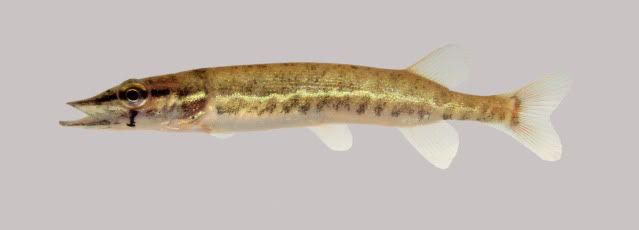
Laterally, there is a pretty distinct bar that has a gold appearance to it. That is the "pigment-free line" that I'm talking about. I highlighted it with red in this picture;
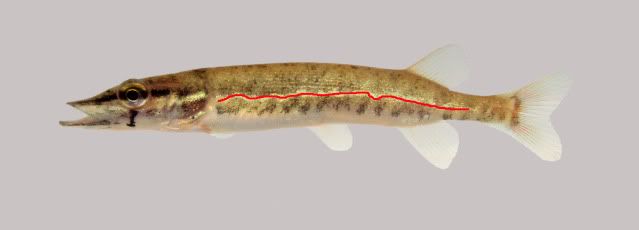
Now, let's observe a juvenile Northern Pike of about the same size;
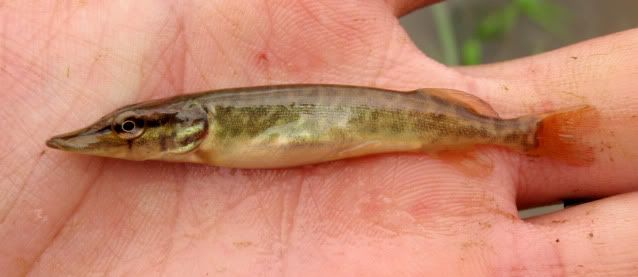
There's no "pigment-free line" below the lateral line on this fish.
The differences become more exaggerated as the fish mature. Here is an adult Grass Pickerel (which is sometimes confused with juvenile Northern Pike);
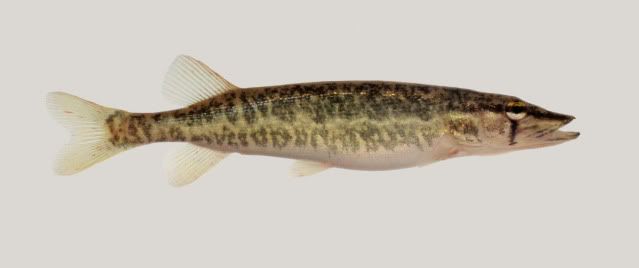
You may have to use your imagination a bit, but the "pigment-free line" is still present on the adult Grass Pickerel (highlighted in red).
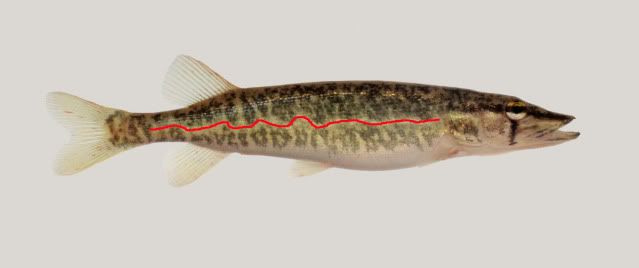
A Northern Pike of that size starts to take on a different appearance and becomes easier to distinguish;

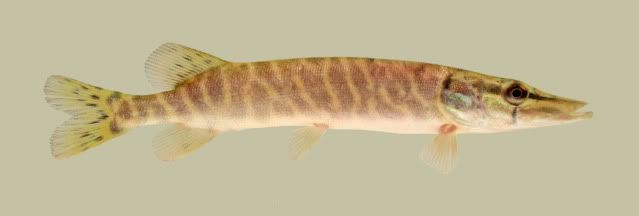
Note the lack of a "pigment-free line" on the Northern Pike.
Adult Northern Pike will have markings quite different from juveniles;
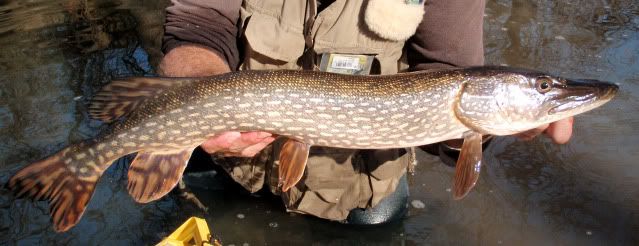
Aside from the size of this fish, note that it has no "pigment-free line" as an adult.
I hope this serves as a helpful tool for identification of juvenile northern pike and juvenile grass pickerel. Please feel free to ask questions. I'll also post some pictures below of both juvenile Grass Pickerel and juvenile Northern Pike. If you feel comfortable identifying these fish here, then hopefully you'll be able to do so in the field.


